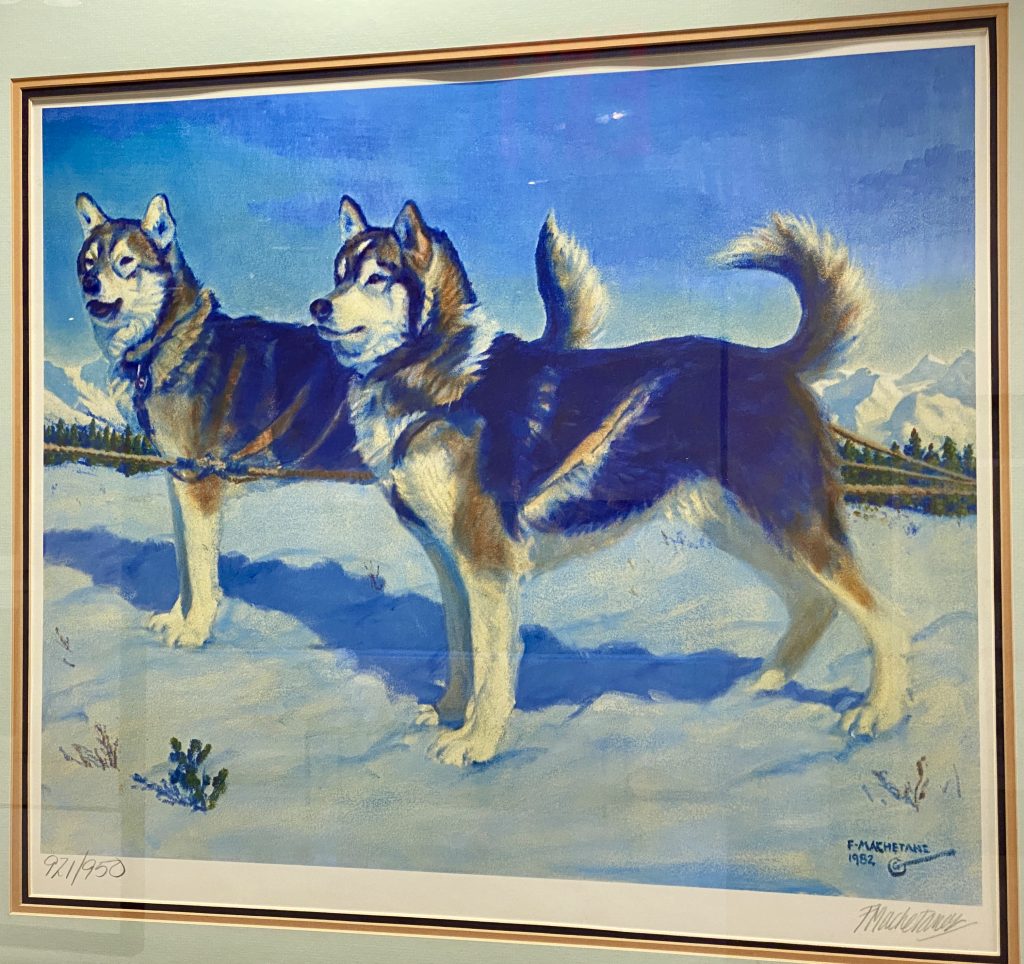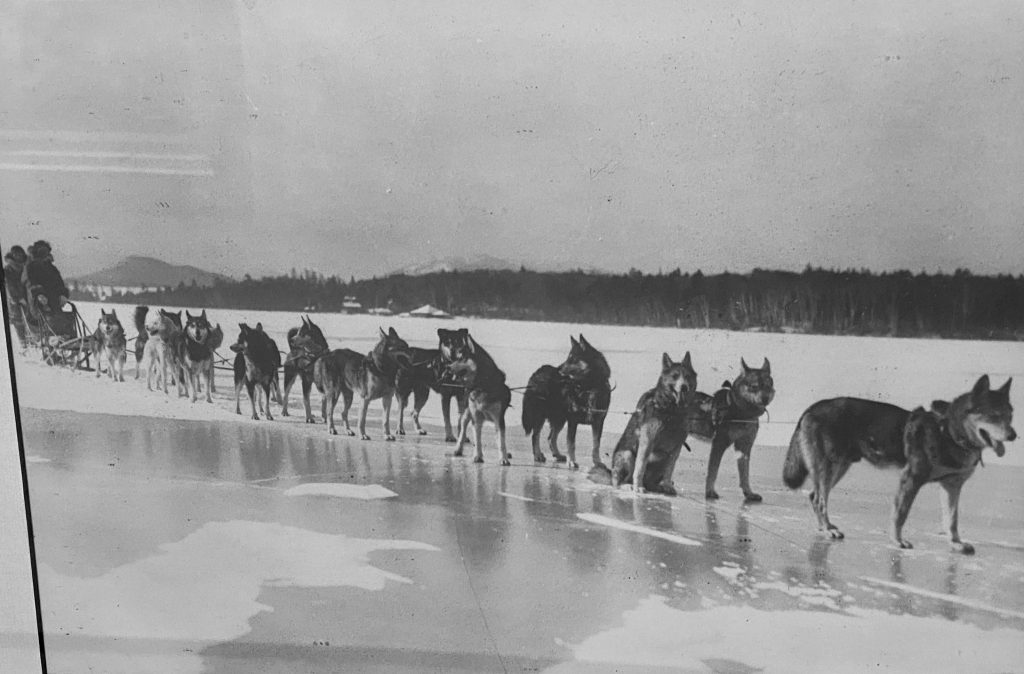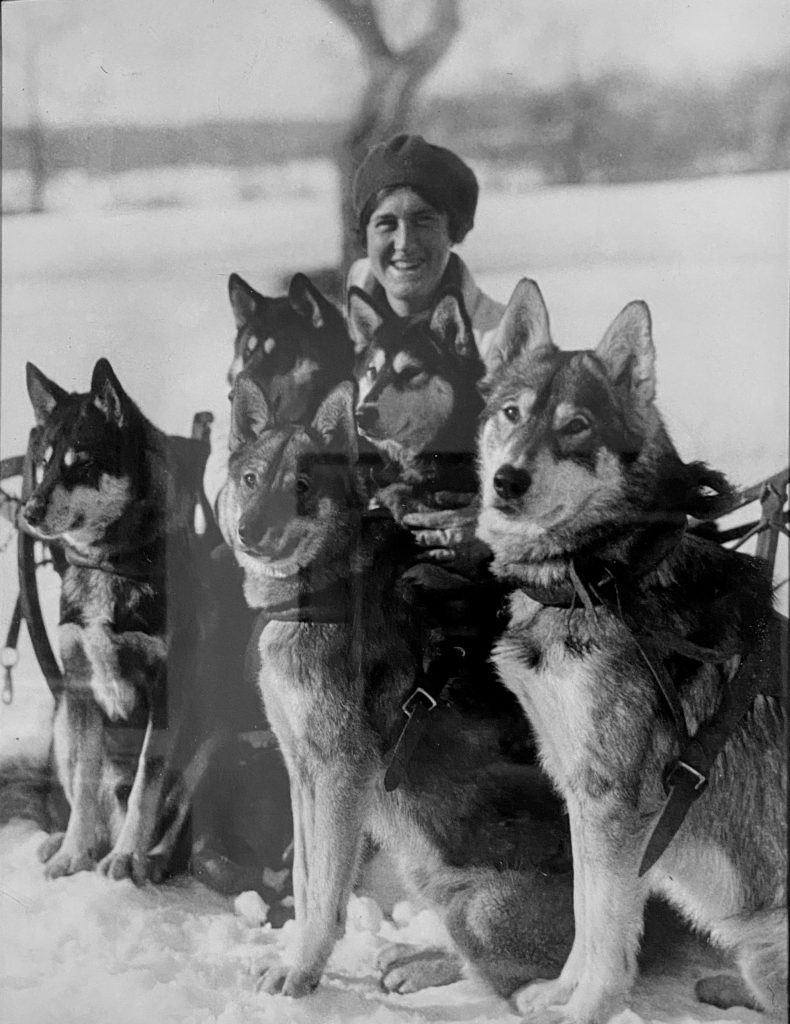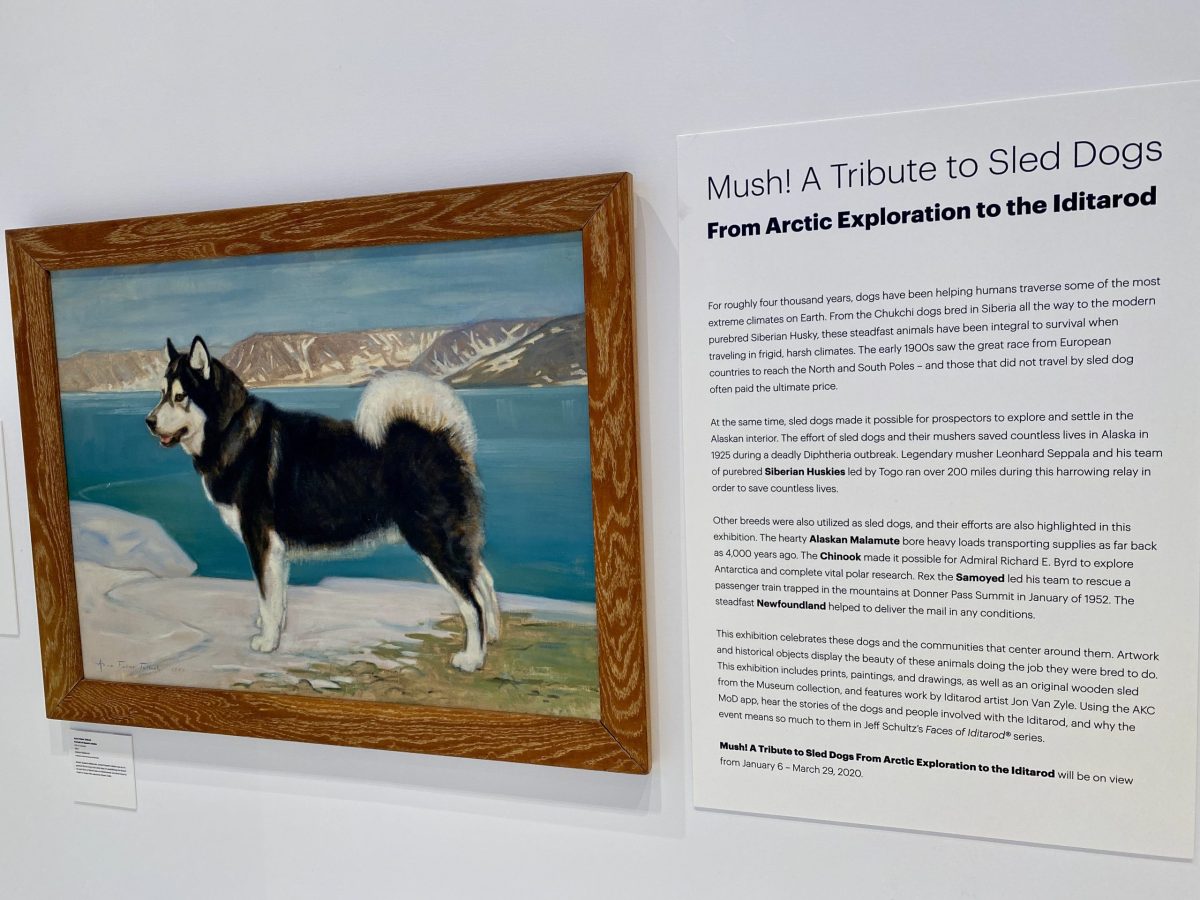Sled dogs have been getting lots of attention lately, including the December 2019 Disney movie “Togo” and the just-released film “The Call of the Wild,” and in New York City an exhibition in Manhattan features the history of sled dogs and their important roles in exploration and life-saving events, along with looking at the annual Iditarod race in Alaska.
The exhibition is at the American Kennel Club (AKC) Museum of the Dog, 101 Park Avenue, and is called “Mush! A Tribute to Sled Dogs from Arctic Exploration to the Iditarod.”
The history of the sled dog is outlined, dating back 4,000 years to Siberia. Chukchi dogs, direct forerunners of the present-day Siberian Husky, were suited for long hunting trips and also for family companionship for having a good temperament.
In the early 20th century, Siberian Huskies would be imported to the United States and make their American race debut in 1909 at the All Alaska Sweepstakes. Other sled dog breeds noted in the exhibition include the Alaskan Malamute and the Chinook.

Siberian Huskies played a crucial role in an international race in the early 1900’s, the exhibition notes, which was a race between the United States, Norway and Great Britain to reach the poles.
Norwegian explorer Roald Amundsen took a group of Siberian Huskies on his trip to the South Pole, while British explorer Robert F. Scott took ponies, which are herbivores and meant having to carry along heavy loads of food. Amundsen reach the South Pole first, and while both teams would make it there, Scott’s team died of starvation on the return trip.
The famous serum run of 1925 is also noted, when a diphtheria epidemic in Nome, Alaska, led to Siberian Huskies delivering serum through stormy and freezing conditions, with much of the journey led by the dog Togo, featured in the recent Disney film and honored by a statue in the Lower East Side’s Seward Park.
Artifacts in the exhibition include mushing outerwear used to stay warm across different decades, and the evolution of various materials used in dog sledding, going from leather, straw and rawhide to nylon and Velcro. There is also a camp stove burner used in a 1939-41 trip to the Antarctic. Paintings and photos in the exhibition depict dog sled teams and the vast landscapes they often travel through.


“For thousands of years sled dogs have played an integral part in survival in the arctic and a key role for indigenous circumpolar people,” said Executive Director Alan Fausel in a statement. “The general public has fallen in love with these breeds but many do not realize that each dog was bred with a purpose and sled dogs still maintain their purpose today.”
The exhibition also includes a series of photos from the 2019 “Faces of Iditarod” series by Iditarod photographer Jeff Schultz. During the 2019 race, Schultz photographed dogs and people involved in the race, along with conducting interviews which can be heard through an app offered by the museum.

The portraits include sled dogs and information about their role, personality and bloodline, and people involved including mushers, volunteers, village residents and spectators.
The exhibition will run until March 29, and more information can be found at museumofthedog.org.



































